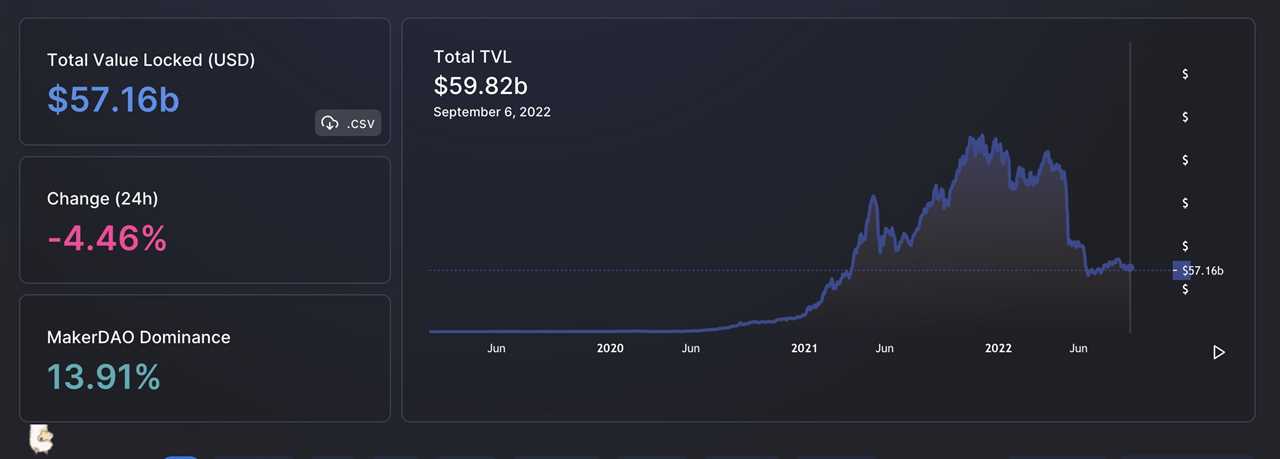
Decentralized finance (DeFi) has seen tremendous growth since its inception, expanding by more than 1,200% in 2021 in total value locked (TVL) and surpassing $240 billion in invested assets. While DeFi has since dropped to around $60 billion TVL as a result of wider macroeconomic trends, such as rising inflation, the seeds are in place for DeFi to reconfigure the foundations of our financial infrastructure when the next market cycle comes.
Historically, the return to a bull market develops over a four-year trajectory. This time, a recovery in 2024 is highly feasible due to the maturation of monetary policy and easing of regulatory headwinds, which can allow for reduced interest rates and enable the flow of funding back into the space.
That bull market is likely to be driven by four factors: the taming of global inflation, renewed confidence in the sustainability of DeFi business models, the migration of at least 50 million crypto holders from the world of centralized exchanges to the world of decentralized applications (there are more than 300 million crypto holders worldwide today, mostly via exchanges), and, potentially, the next change in Bitcoin (BTC) mining difficulty.

Everyone is wondering where users and developers should turn next for opportunities. Is the next cycle going to repeat the 2020 “DeFi summer,” only bigger and with more users?
A shift to economic sustainability
Startup founders can no longer rely on “magic internet money.” What this means is that the market is unlikely to revert to the levels of confidence that allowed DeFi protocol founders to reward early users with large amounts of protocol-generated tokens, thus subsidizing annual yields of more than 100% or even 1,000% on invested capital.
While DeFi protocol tokens will continue to have a role to play, the minting of these tokens is going to be under increased scrutiny. Market participants will be questioning whether the protocol is able to generate enough fees to fund its treasury and eventually retain (or invest) more value than what it is distributing to end-users via inflation or rewards.
Related: Bitcoin bulls may have to wait until 2024 for next BTC price ‘rocket stage’
Of course, this does not mean that DeFi protocols are expected to be profitable from Day 1. Web3 founders will need to consider the concept of unit economics, borrowed from Web2 and Silicon Valley. This will allow a tech-enabled business model to generate free cash flow in excess of operating and user acquisition costs once outsized early-stage investments are not required anymore.
In the world of DeFi, the concept of unit economics translates into an imperative to achieve capital efficiency for liquidity providers and market makers. Simply put, this means that a DeFi protocol must eventually be able to generate enough transaction fees to reward liquidity providers once it cannot rely on arbitrary protocol token inflation anymore.
What this means for decentralized exchanges
Decentralized exchanges (DEXs), also called automated market makers, have always been at the forefront of DeFi. For example, SushiSwap pioneered the concept of protocol-sponsored early adopter rewards and “vampire attacks” to incentivize liquidity providers to move away from Uniswap.
DEXs have historically not been capital efficient, requiring large amounts of liquidity from liquidity providers in order to power every dollar of daily trading volume in a decentralized manner. As liquidity pools generate low fees per dollar of liquidity locked, they relied on protocol-generated tokens to generate sufficient rewards for liquidity providers.
We are now seeing the emergence of more capital-efficient DEXs in a trend that is likely to be followed by every other DeFi vertical.
For example, Uniswap v3 allows liquidity providers to concentrate their capital to enable trading between specific price ranges only. This allows one dollar of liquidity to enable many more dollars of daily trading volume, as long as the prices stay within that range, and thus capture more transaction fees per dollar invested in liquidity without relying on protocol-generated token inflation.
Related: Crypto users push back against dYdX promotion requiring face scan
Another example is dYdX, a decentralized derivatives platform. As dYdX utilizes an order book to match buy and sell orders, it does not require regular users to commit liquidity in liquidity pools and relies instead on much more efficient professional market makers to act as counterparties to end-users.
Capital efficiency is the name of the game
The next wave of DeFi innovation is going to come from founders who are able to design decentralized business models that generate sustainable unit economics for liquidity providers and market makers.
The startups that will create these business models may not even exist today. As a result, we are seeing a proliferation of early-stage Web3 startup accelerators looking for the “next big thing” (for example, Cronos, Outlier Ventures or BitDAO).
In order for DeFi to continue accelerating growth among the next generation of Web3 users, founders and projects will need to continue to build a variety of options with different risk and reward profiles. With an increasing number of interoperable blockchains that offer high throughput and low transaction rates, developers are presented with a diverse array of options upon which to further develop DeFi and yield-generating decentralized applications. As Web3 moves toward a multichain future, competition will help foster innovation in order to deliver the best products for end users.
This article is for general information purposes and is not intended to be and should not be taken as legal or investment advice. The views, thoughts, and opinions expressed here are the author’s alone and do not necessarily reflect or represent the views and opinions of Cointelegraph.
Title: What will drive crypto’s likely 2024 bull run?
Sourced From: cointelegraph.com/news/what-will-drive-crypto-s-likely-2024-bull-run
Published Date: Wed, 07 Sep 2022 18:12:10 +0100






